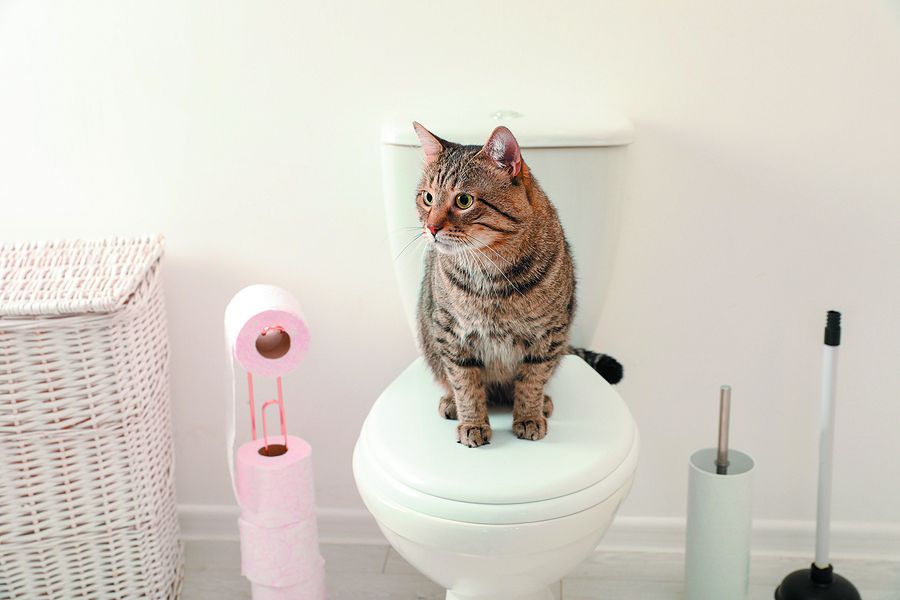Avoid Clogs and Damage: Never Flush Cat Poop Down Your Toilet - Professional Recommendations
Avoid Clogs and Damage: Never Flush Cat Poop Down Your Toilet - Professional Recommendations
Blog Article
Everyone has his or her own rationale with regards to How to Dispose of Cat Poop and Litter Without Plastic Bags.
Intro
As feline owners, it's necessary to bear in mind exactly how we take care of our feline good friends' waste. While it might appear practical to flush feline poop down the commode, this practice can have detrimental effects for both the environment and human health.
Environmental Impact
Purging feline poop presents unsafe virus and bloodsuckers right into the supply of water, posturing a considerable threat to water ecosystems. These impurities can negatively impact marine life and compromise water quality.
Health Risks
In addition to environmental concerns, purging pet cat waste can additionally posture health and wellness threats to human beings. Pet cat feces may include Toxoplasma gondii, a parasite that can trigger toxoplasmosis-- a potentially severe illness, especially for expecting women and people with weakened body immune systems.
Alternatives to Flushing
Luckily, there are much safer and extra accountable methods to get rid of feline poop. Consider the following options:
1. Scoop and Dispose in Trash
The most usual approach of disposing of pet cat poop is to scoop it into an eco-friendly bag and toss it in the garbage. Make certain to utilize a dedicated trash inside story and get rid of the waste immediately.
2. Usage Biodegradable Litter
Go with biodegradable feline trash made from materials such as corn or wheat. These clutters are eco-friendly and can be securely gotten rid of in the garbage.
3. Bury in the Yard
If you have a yard, think about hiding cat waste in a marked location far from vegetable gardens and water resources. Make sure to dig deep adequate to stop contamination of groundwater.
4. Mount a Pet Waste Disposal System
Invest in an animal waste disposal system particularly created for cat waste. These systems utilize enzymes to break down the waste, decreasing odor and ecological impact.
Verdict
Accountable pet dog ownership extends past supplying food and sanctuary-- it additionally involves appropriate waste management. By refraining from purging feline poop down the commode and opting for different disposal techniques, we can minimize our environmental footprint and safeguard human wellness.
Why Can’t I Flush Cat Poop?
It Spreads a Parasite
Cats are frequently infected with a parasite called toxoplasma gondii. The parasite causes an infection called toxoplasmosis. It is usually harmless to cats. The parasite only uses cat poop as a host for its eggs. Otherwise, the cat’s immune system usually keeps the infection at low enough levels to maintain its own health. But it does not stop the develop of eggs. These eggs are tiny and surprisingly tough. They may survive for a year before they begin to grow. But that’s the problem.
Our wastewater system is not designed to deal with toxoplasmosis eggs. Instead, most eggs will flush from your toilet into sewers and wastewater management plants. After the sewage is treated for many other harmful things in it, it is typically released into local rivers, lakes, or oceans. Here, the toxoplasmosis eggs can find new hosts, including starfish, crabs, otters, and many other wildlife. For many, this is a significant risk to their health. Toxoplasmosis can also end up infecting water sources that are important for agriculture, which means our deer, pigs, and sheep can get infected too.
Is There Risk to Humans?
There can be a risk to human life from flushing cat poop down the toilet. If you do so, the parasites from your cat’s poop can end up in shellfish, game animals, or livestock. If this meat is then served raw or undercooked, the people who eat it can get sick.
In fact, according to the CDC, 40 million people in the United States are infected with toxoplasma gondii. They get it from exposure to infected seafood, or from some kind of cat poop contamination, like drinking from a stream that is contaminated or touching anything that has come into contact with cat poop. That includes just cleaning a cat litter box.
Most people who get infected with these parasites will not develop any symptoms. However, for pregnant women or for those with compromised immune systems, the parasite can cause severe health problems.
How to Handle Cat Poop
The best way to handle cat poop is actually to clean the box more often. The eggs that the parasite sheds will not become active until one to five days after the cat poops. That means that if you clean daily, you’re much less likely to come into direct contact with infectious eggs.
That said, always dispose of cat poop in the garbage and not down the toilet. Wash your hands before and after you clean the litter box, and bring the bag of poop right outside to your garbage bins.
https://trenchlesssolutionsusa.com/why-cant-i-flush-cat-poop/

Hopefully you liked our topic about How to Dispose of Cat Poop and Litter Without Plastic Bags. Thank you so much for taking a few minutes to read through our piece. Liked our content? Please share it. Let another person find it. I truly appreciate reading our article about Can You Flush Cat Poop Down The Toilet?.
Schedule A Service Call Report this page